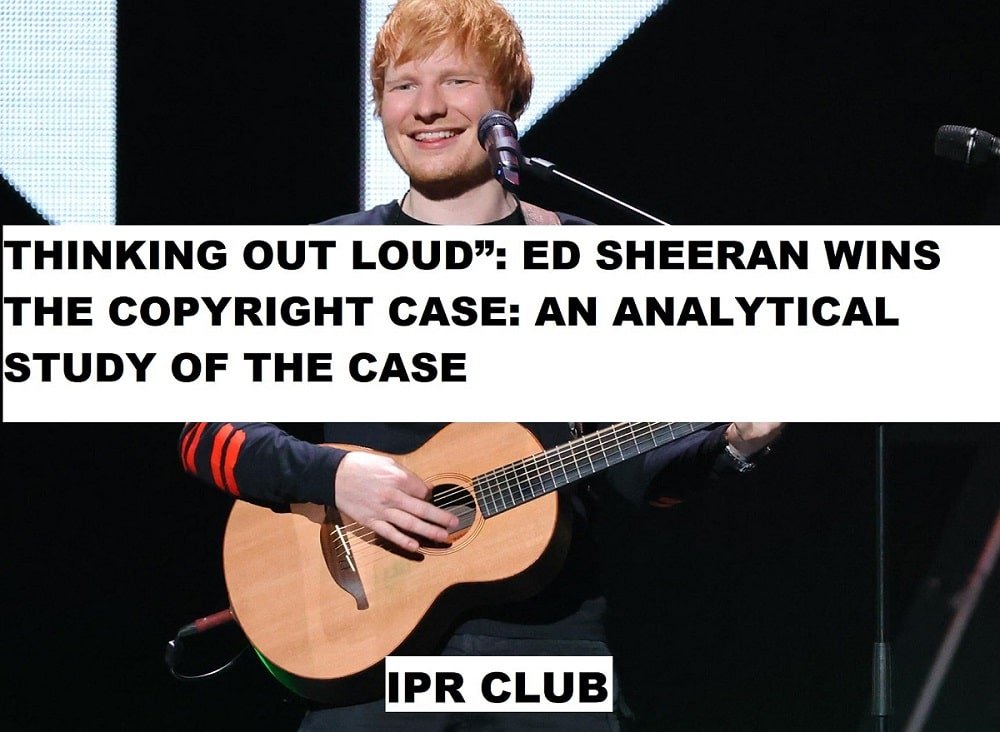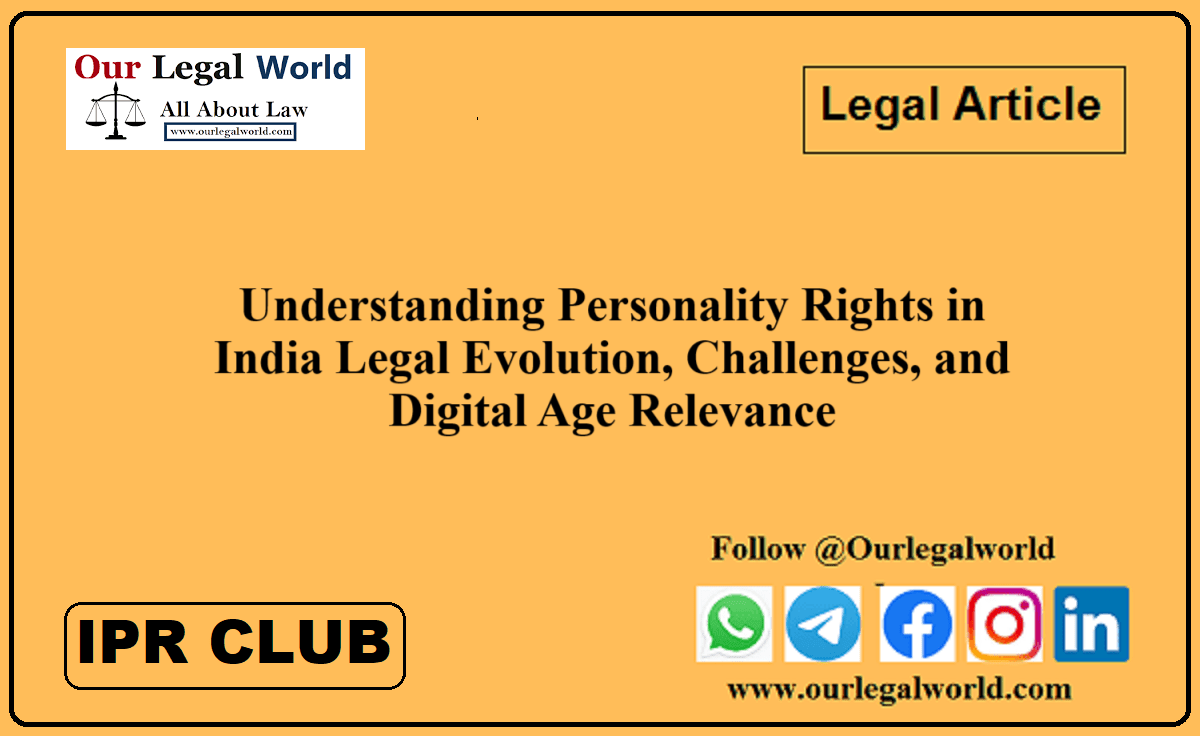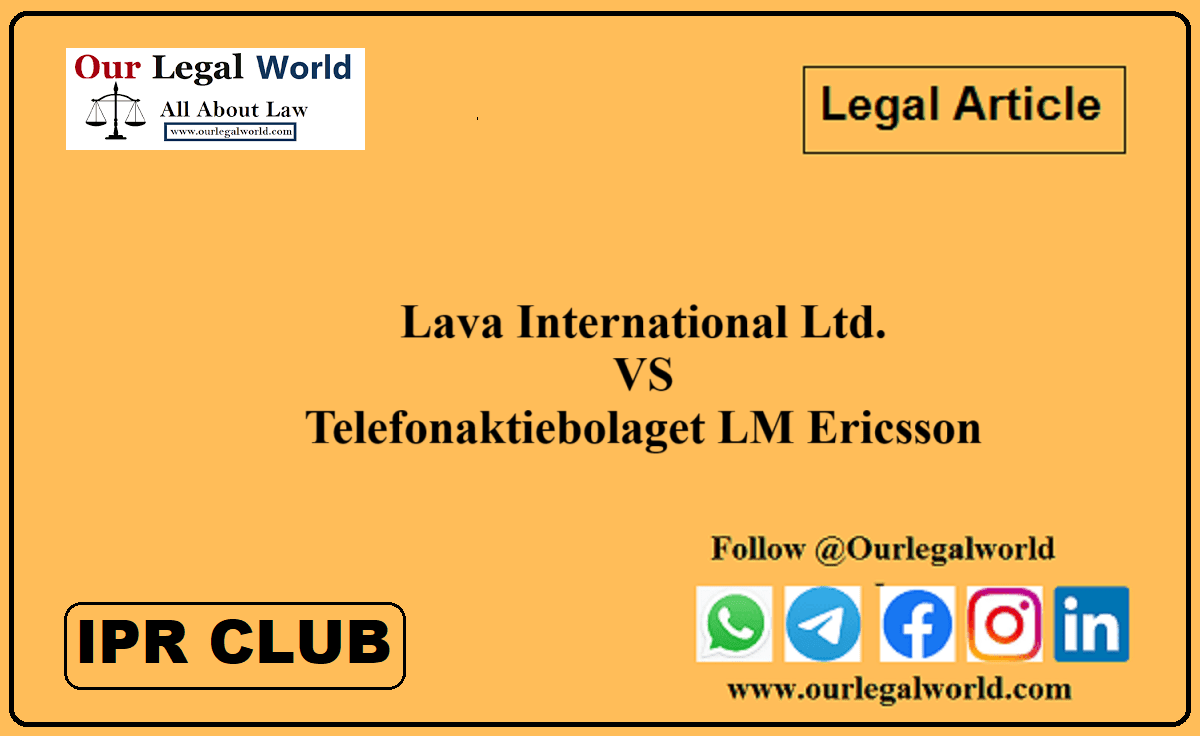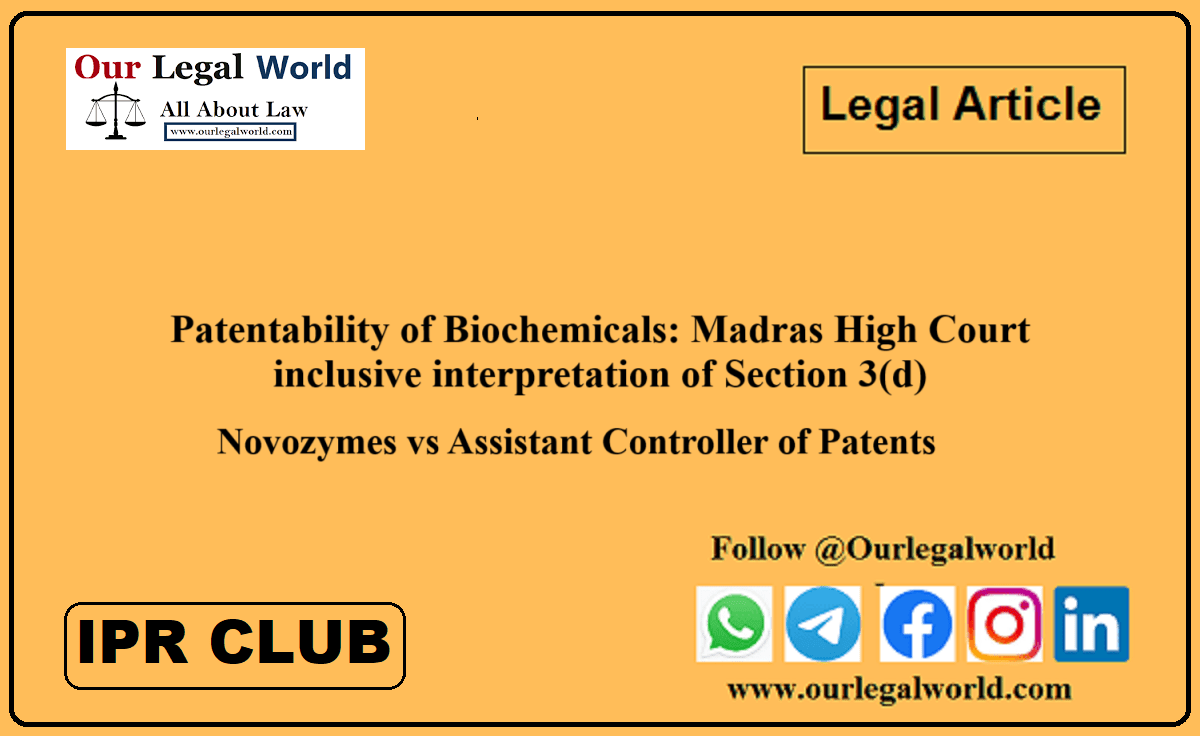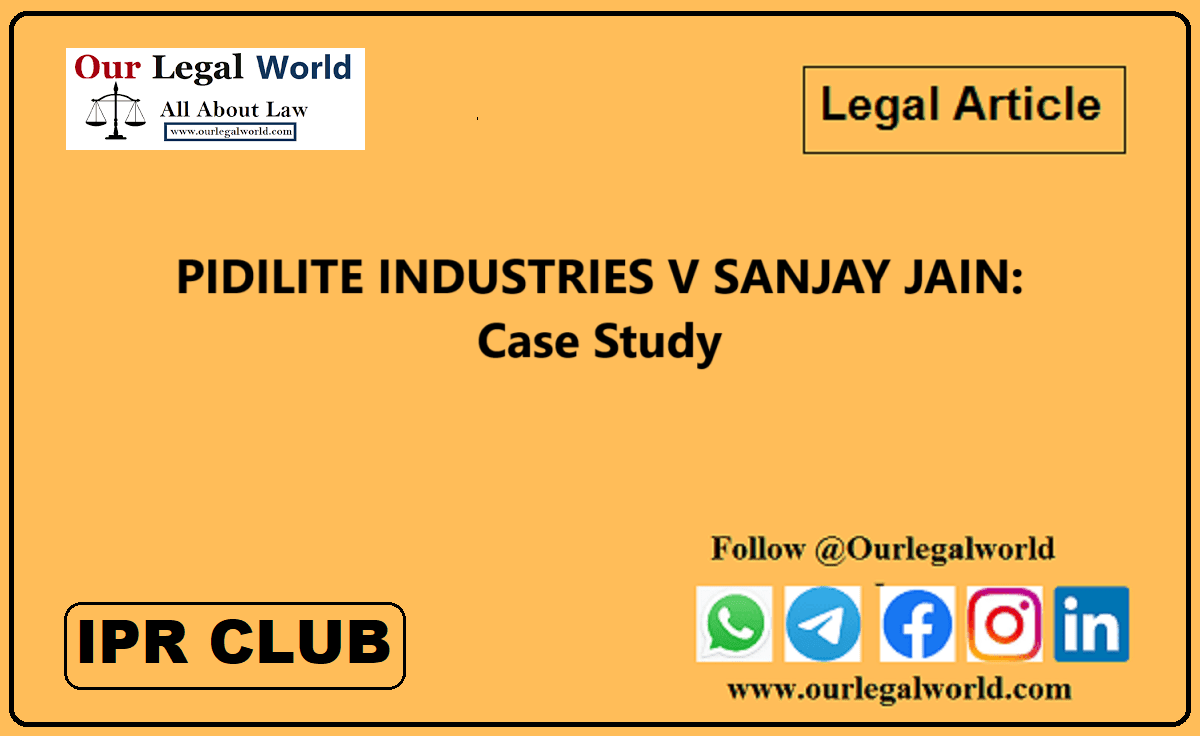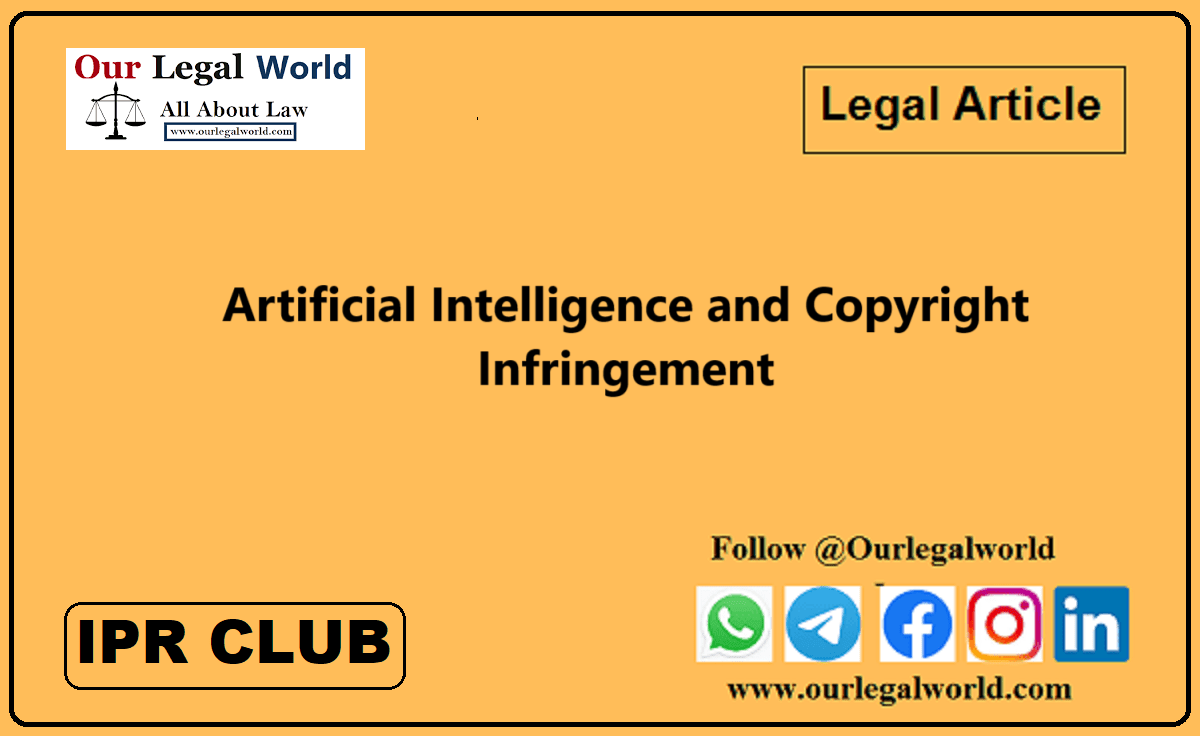“THINKING OUT LOUD”: ED SHEERAN WINS THE COPYRIGHT CASE: AN ANALYTICAL STUDY OF THE CASE
- Arya Hartalkar[1]
It was held by the jury on 4th May 2023 that Ed Sheeran did not copy the Marvin Gaye’s “Let’s Get it on”.
Marvin Gaye scored number one on the Billboard Pop Singles list in 1973 with his new R&B smash for Motown Records, “Let’s Get It On.” The seductive record, cowritten with producer Ed Townsend, sold more than two million copies in the weeks following its release, cementing Gaye’s status as the “Prince of Soul” and an American music classic.
More than 40 years later, English musician Ed Sheeran wrote “Thinking Out Loud,” a hugely successful romantic ballad that topped the charts in Europe and America and has been purchased or streamed over 4,200,000 times. The heirs of Gaye’s cowriter, Townsend, recently sued Ed Sheeran, alleging those sections of his song duplicated parts of “Let’s Get It On,” infringing on the heirs’ copyright, and seeking $100 million in damages. Ed Sheeran, for his part, has gave statement that he did not steal Gaye’s song and that any similarities stem from the prevalence of particular chords and chord progressions in mainstream music.
How it is decided whether it is breech of copyright or not? To determine this firstly we have to find out whether there is any similarity or not. Also, the accessibility is the second factor that has to be considered.
There was a strange issue in this Ed Sheeran and Marvin Gaye case that has come up before in music trials, and it had to do with how the Copyright Act changed in the 1970s. It turns out that for most songs written before 1978, the only thing you could deposit with the Copyright Office, and so protect, was the sheet music for the tune. Of course, the sheet music may or may not cover all parts of the song’s performance. So here, as a purely technical matter, what Townsend’s estate has rights to is the music embodied in the deposit copy of the sheet music – in this case, it’s just chords and lyrics, there is no bassline. So, the bassline can’t be part of the consideration.
The parties have submitted competing sets of jury instructions to the judge, and the judge will ultimately give instructions, and will try to explain this complicated question of what is protectable, and what has to be similar.
However, the jury members were asked to determine whether the protectable material is substantially identical or not. The judge clearly stated in this case in a pre-trial ruling that the bass is out, and the jury will only evaluate the chord progression and harmonic rhythm – but that they cannot consider chord progressions and harmonic rhythms that are part of “common musical techniques.” So, it will be this very restricted sense of whether Gaye’s chord progression is innovative or new, which would indicate that it was protected. The question then becomes whether it was similar to the one in “Let’s Get It On.”
It is a difficult hurdle to overcome in front of a jury, demonstrating that these things can be protected and reproduced when they are limited. However, it appears that the plaintiffs in this case have done an outstanding job of trial advocacy. They began the case with a video of Ed Sheeran doing his own mashup of his song “Thinking Out Loud” with Marvin Gaye’s “Let’s Get It On,” and they have been arguing to the jury that if you can mash the songs up that effortlessly, it is basically an admission of copyright infringement. However, it will finally be decided by the jury, and, once again, conventional musical approaches are prohibited.
Because the jury members were not musicians, it was difficult for them to look at and compare sheet music if they do not know how to read music. This is a prevalent difficulty in copyright, trademark, and patent matters where you are attempting to explain a somewhat specialised topic to the jury. You are attempting to teach them what constitutes art in a particular field, how chord progression works, or how a transistor works.
The advantage of this system is that we rely on juries to accomplish those things, and we rely on lawyers to undertake the types of trial advocacy required to instruct them. Of course, we also bring in experts, such as musicologists, to help the jury understand what is going on. The plan is to educate the jurors before allowing them to make their decision.
An earlier Marvin Gaye case and the very important, current Led Zeppelin “Stairway to Heaven” case are the two most obvious prior examples that might provide some advice.
A jury ruled in 2015 that the Robin Thicke and Pharrell Williams song “Blurred Lines” infringed on another Marvin Gaye song, “Got to Give it Up,” and awarded more than $5 million in damages. The situation was identical – the chord progression was similarly an issue, and the music sounded extremely similar. That was a momentous verdict, and I believe it took the business by surprise at the time.
Then, I believe another case to look to for guidance is Skidmore v. Led Zeppelin[2], a 2020 case from the Ninth Circuit Court of Appeals. There are several things it said that are pertinent to this case, but the most crucial is that it said, effectively, that certain musical building blocks belong in the public domain. It eventually ruled that, with regard to the charges in that instance, the only items accused of being the same regarding the melody in “Stairway to Heaven” were drawn from basic musical building blocks, which were not protectable.
Also Read: THE TREND OF REMIX: RECREATING AMATEURLY
Another noteworthy parallel exists in that case, as it too dealt with the deposit copy sheet music issue. The jury in the Led Zeppelin case was not permitted to hear the audio recording of the copyrighted song; instead, they were only permitted to examine the sheet music and compare it to the audio recording of “Stairway to Heaven.” It was fascinating to put that question to the test – could a jury figure it out? The Ninth Circuit ultimately decided in that case that it was appropriate to only provide the jury with the sheet music, not have them play the earlier song because the deposit copy was all that mattered, and that the things in that sheet music were ultimately the kinds of musical building blocks that aren’t protected.
The defences’ position in the current Ed Sheeran case is remarkably similar to that in the Led Zeppelin case. The plaintiffs, on the other side, are looking for a similar outcome to Marvin Gaye’s estate in the “Blurred Lines” lawsuit. These cases, interestingly, come out the other way, so they may not give us much information about what might happen here, but they do help us comprehend the case.
If we think from the reverse perspective that is if Ed Sheeren had lost the case, he won’t have to stop using it; he will probably only have to pay monetary damages. An injunction would be a complete surprise in this situation. There would have to be evidence that the estate of the Gaye song is being injured in some way by Sheeran’s song being available in the market in a way that money cannot compensate for. That appears rather unlikely. However, I would not be surprised if the jury awarded extremely large damages. They may eventually decide that they are entitled to a big royalty or a significant percentage of the income from this extremely hit Ed Sheeran song.
If this occurs, it will have a widespread influence on the sector. I believe that whenever there is a copyright infringement case, it affects how the industry feels about how safe it is to create new music influenced by old music. The “Blurred Lines”/Marvin Gaye judgement was a significant surprise, and it caused many people to think twice about vetting new releases to avoid lawsuits. And, certainly, a flurry of copyright claims were brought shortly after that. However, when the Ninth Circuit decided the Led Zeppelin case, I believe the pendulum swung back the other way. As in, ‘OK, maybe we should be less concerned with inventing something newer and derivative.’ Whatever occurs, it will have an impact on how musicians, and more importantly, the companies that support and market them, view the risk of new music, particularly when it is influenced by earlier music.
[1] 3rd Year student perusing B.A. LL.B. Honours in Adjudication and Justicing, Maharashtra National Law University, Nagpur.
[2] 952 F.3d 1051 (9th Cir. 2020)
